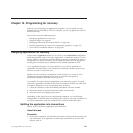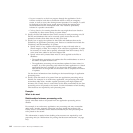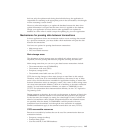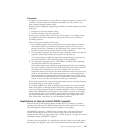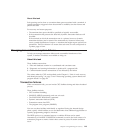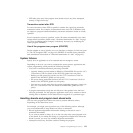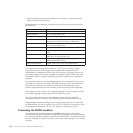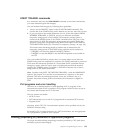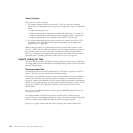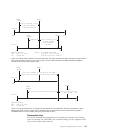The abend processing should analyze the cause of failure as far as possible, and
restart the task if appropriate. Ensure that either the user or the master terminal
operator can take appropriate action to repeat the updates. You could, for example,
allow the user to reinitiate the task.
An alternative solution is for the started transaction to issue a START command
specifying its own TRANSID. Immediately before issuing the RETURN command,
the transaction should cancel the START command. The effect of this will be that,
if a started task fails, it will automatically restart. (If the interval specified in the
START command is too short, the transaction could be invoked again while the
first invocation is still running. Ensure that the interval is long enough to prevent
this.)
Implications of automatic task initiation (TD trigger level)
Specifying the TRANSID operand in the resource definition for an intrapartition
transient data destination starts the named transaction when the trigger level is
reached. Designate such a destination as logically recoverable. This ensures that
the transient data records are committed before the task executes and uses those
records.
Implications of presenting large amounts of data to the user
Ideally, a transaction that updates files or databases should defer confirmation (to
the user) until such updates are committed (by user syncpoint or end of task).
In cases where the application requires the reply to consist of a large amount of
data that cannot all be viewed at one time (such as data required for browsing),
several techniques are available, including:
v Terminal paging through BMS
v Using transient data queues
Terminal paging through BMS
The application program (using the SEND PAGE BMS commands) builds pages of
output data on a temporary storage queue for subsequent display using operator
page commands.
Such queues should, of course, be specified as recoverable, as described in
“Recovery for temporary storage” on page 135.
The application program should then send a committed output message to the
user to say that the task is complete, and that the output data is available in the
form of terminal pages.
If an uncontrolled termination occurs while the user is viewing the pages of data,
those pages are not lost (assuming that temporary storage for BMS is designated as
recoverable). After emergency restart, the user can resume terminal paging by
using the CSPG CICS-supplied transaction and terminal paging commands. (For
more information about CSPG, see the CICS Supplied Transactions)
Using transient data queues
When a number of tasks direct large amounts of data to a single terminal (for
example, a printer receiving multipage reports initiated by the users), it may be
necessary to queue the data (on disk) until the terminal is ready to receive it.
148 CICS TS for z/OS 4.1: Recovery and Restart Guide




